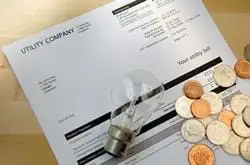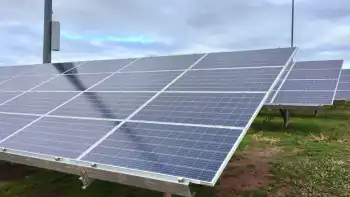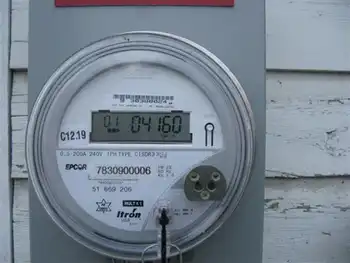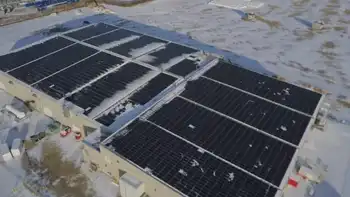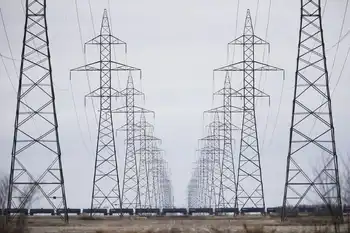Green policy shows an insensitive side
By Globe and Mail
Arc Flash Training CSA Z462 - Electrical Safety Essentials
Our customized live online or in‑person group training can be delivered to your staff at your location.

- Live Online
- 6 hours Instructor-led
- Group Training Available
How, the Ontario Premier was asked, could his government be considering putting wind turbines off the shores of Point Pelee, in Lake ErieÂ’s Pigeon Bay? As one of the most ecologically sensitive corners of the province, wasnÂ’t it the sort of place that should be deemed off limits for energy development?
After broadly extolling the virtues of his Green Energy Act, Mr. McGuinty stumbled through an acknowledgment that he hadn't really given this specific issue much consideration. “You’ve raised something which I’ve not thought about,” he said. “I’m glad you're not in opposition.”
It was a strange thing for the Premier to say, even taking into account the number of files that cross his desk. The proposal for Point Pelee raised the ire of everyone from deep-pocketed residents to local mayors to Margaret Atwood. Only a few weeks after his Globe visit, a pair of Mr. McGuinty’s own MPPs – Bruce Crozier and Pat Hoy – publicly came out against their own government's handling of the issue.
But Mr. McGuinty's answer to the editorial board epitomized one of the biggest flaws in his party's plans to attract wind energy development. Conceived in haste, with the aim of creating jobs and power as quickly as possible, the Liberal strategy was written too broadly to fully distinguish between good projects and bad ones.
In Point Pelee, a solution has come too late to avoid generating an avoidable degree of angst about green energy in general. And the solution itself is broad enough to have consequences elsewhere.
Compared to other areas of the province, such as Prince Edward County, the Essex region is not a hotbed for the not-in-my-backyard sentiments that Mr. McGuinty has identified as a barrier to spreading wind turbines across the land.
A fruit basket at the southernmost tip of Canada – the town of Leamington is the country’s “tomato capital” – it seems to have been predisposed to welcome the hundreds of wind turbines that have popped up on local farms or are in development. While a few people on neighbouring properties aren’t happy, there has been little organized opposition to land turbines.
A drive through the region, however, quickly shows that the proposal to put as many as 150 turbines in the bay has struck a nerve.
“No wind turbines in our lake” signs dot the lawns of properties around Leamington and the neighbouring town of Kingsville – not just on the shoreline properties, but farther inland as well. In conversation, everyone seems to be aware of the issue.
Jim Krushelniski, who leads the protest group that distributes the signs, insists his opposition has nothing to do with NIMBYism. This is a slightly dubious claim, coming as it does while Mr. Krushelniski – a former Heinz executive – sits in the office of a luxury home that looks out on the lake. It’s hard to believe that the prospect of wind turbines spoiling his magnificent view hasn’t crossed his mind.
Nevertheless, he’s able to rhyme off a list of other concerns, including the potential impacts on drinking water and commercial fishing. The one that seems to have gotten the most traction is the effect on bird and bat migration – a major tourist attraction for Point Pelee, which sees more than 300 bird species pass through in the spring. That’s also what’s attracted the attention of Ms. Atwood, a noted bird enthusiast with a home on Pelee Island, the popular destination about 18 kilometres from shore. Given the tendency of turbines to make mincemeat of things airborne, it doesn’t require great imagination to figure out what would happen.
Fuelling the various worries is the fact that this is uncharted territory. Although there are several other proposals to build wind farms in the Great Lakes, on both sides of the border, none have actually been built. So itÂ’s hard to know what exactly the environmental impact will be. And Essex, a place with a relatively dense population and a strong tourist industry, is a questionable place to test it out.
Indeed, very few people seem to think itÂ’s a good idea to put wind turbines in Pigeon Bay. But thereÂ’s one notable exception: the people who want to build them.
SouthPoint Wind embodies the risks of unleashing a gold rush by offering premium prices for green energy, as Ontario has done. The company is run by a local housing developer and is viewed with considerable skepticism by more established developers – some of whom looked at Point Pelee and decided it wasn’t suitable for development.
SouthPoint is widely accused of doing a poor job of engaging locals in its planning. Mr. Crozier, the MPP for much of the area, draws an unfavourable comparison with Brookfield Renewable Power, the company that’s building many of the local land turbines. “We have one proponent who has worked with the community and gone the extra kilometre to communicate with the community,” he says. “My view is that SouthPoint has not made any extra effort whatsoever.”
Since 2006, when SouthPoint first brought forward its proposal, it appears to have been in a battle with residents. In 2007, when the province imposed a moratorium on offshore projects on the Great Lakes, the residents seemed to be winning. But the moratorium was lifted in 2008 leading up to the introduction of the Green Energy Act – legislation that simultaneously increased the financial incentives for wind development and reduced the barriers.
Aiming to expedite applications, the act greatly reduced the role of municipalities in the process. As a result, much of the case against SouthPoint’s proposal – which Essex’s communities had invested considerable resources in building – had to be tossed out the window.
By this past spring, residents felt like they were fighting an uphill battle to stop the project from going forward. And there became a growing mistrust of the Green Energy Act in general.
In early June, Mr. Crozier and Mr. Hoy who represents the other part of the affected area presented a petition against the project in the Ontario Legislature. They also signed their names to it – an unusual move for a pair of MPPs not known as renegades.
Only three weeks later, the government announced a change that suggested the issue had finally arrived on Mr. McGuintyÂ’s radar. But rather than designating Point Pelee a no-go zone, it opted for something much less specific.
On June 25, the government brought forward a proposed new rule for offshore wind development: Any turbines would have to be placed at least five kilometres from the shore.
For the record, officials deny that the rule is aimed at any one project. But within the industry, itÂ’s widely believed it was a response to the Point Pelee dispute, and possibly to another controversial proposal for turbines in Lake Ontario off the shores of Scarborough.
Assuming the proposed rule becomes law this fall, most onlookers believe it will kill SouthPointÂ’s proposal. Leamington Mayor John Adams says heÂ’s now 80 per cent sure the project wonÂ’t move forward rival developers are even surer than that. SouthPoint is declining interview requests until the provinceÂ’s final decision.
But the reality is that it’s not just the Point Pelee development that’s likely to get killed. The Scarborough plan, being advanced by Toronto Hydro, also faces grim prospects – as do most other proposals for the Great Lakes.
Requiring the turbines to be so far from shore makes them much more expensive – that is if they can be built at all, since they require relatively shallow water. Only one or two developers notably Windstream Wolfe Island Shoals Inc., which plans to harvest offshore wind near Kingston are said to be confident they can move forward.
Mr. Crozier, among others, would argue that discouraging that kind of development is a good thing, since the Great Lakes are too valuable a resource to trifle with. And while he thinks offshore wind still has “potential,” even Energy Minister Brad Duguid says he doesn’t think it’s “critical to our future energy needs.”
But that prompts the question: If offshore wind isnÂ’t a priority, why did the government open the door to it in the first place?
The answer, it seems, is that it didnÂ’t really give it much thought. Senior Liberals concede they didnÂ’t anticipate the amount of interest, or the degree of controversy, it would generate.
So as on other fronts, such as the pricing of solar power, the government occasionally appears to be making up its green-energy strategy as it goes along.
If its one-size-fits-all policies caused problems, the Liberals now appear inclined to solve them with one-size-fits-all solutions.
“We said that if we really want to stand head and shoulders above others in North America in terms of being a welcoming economic environment, we would establish provincial standards,” Mr. McGuinty said during that editorial board meeting. “So you know what you get if you want to come here and invest.”
Those standards are evidently somewhat flexible. But before they change, theyÂ’re capable of creating a lot of bad will.





